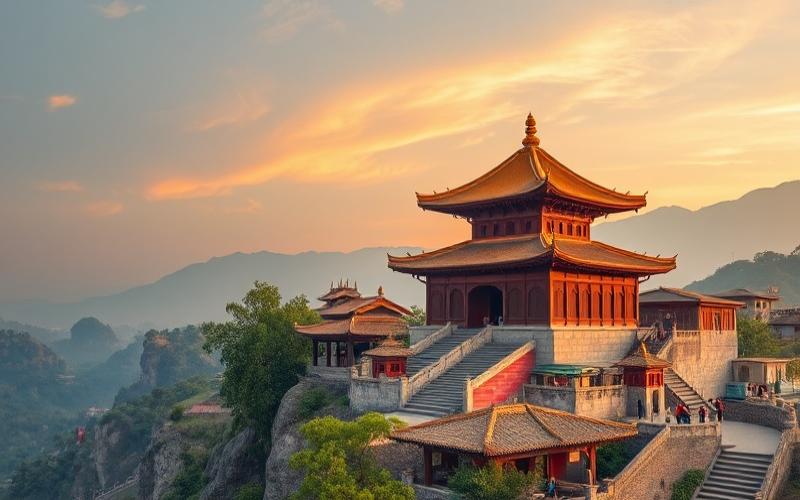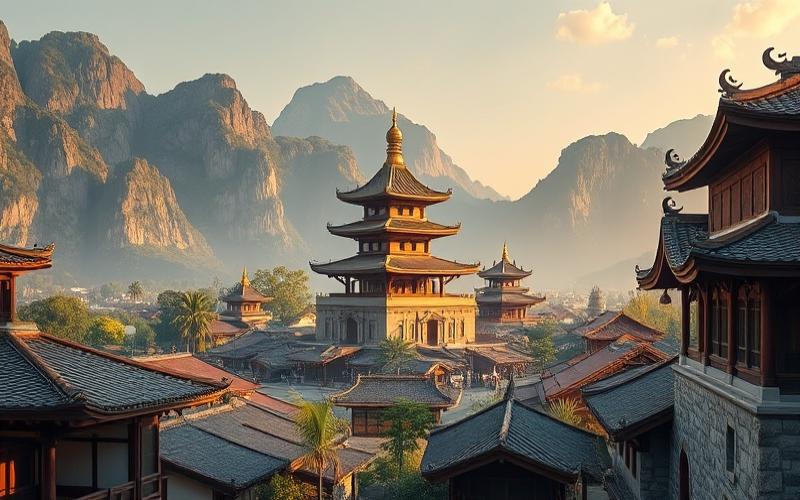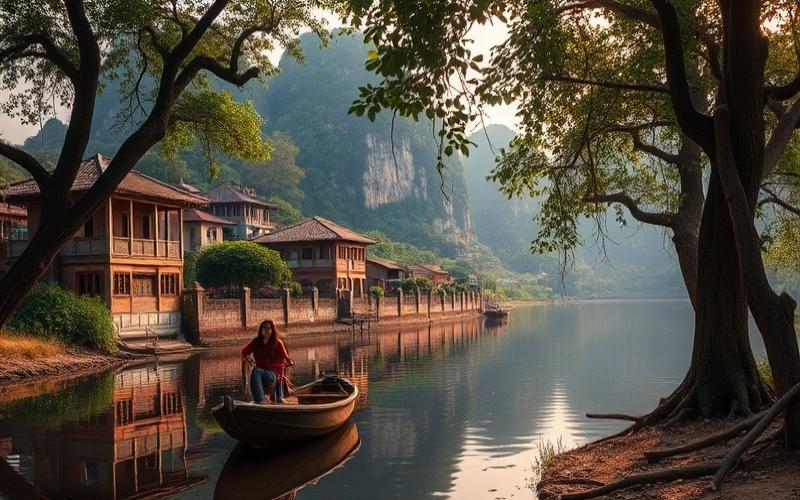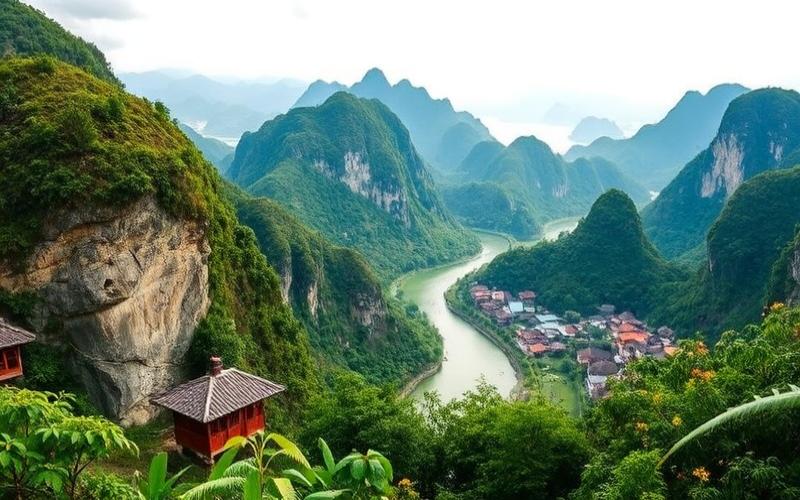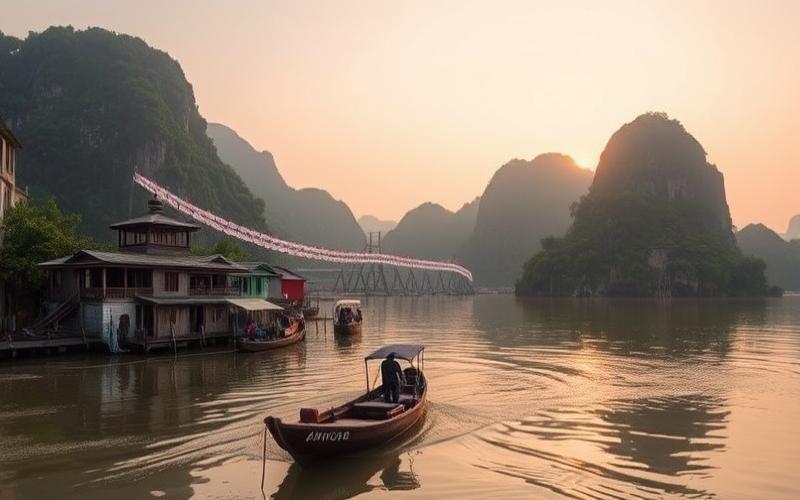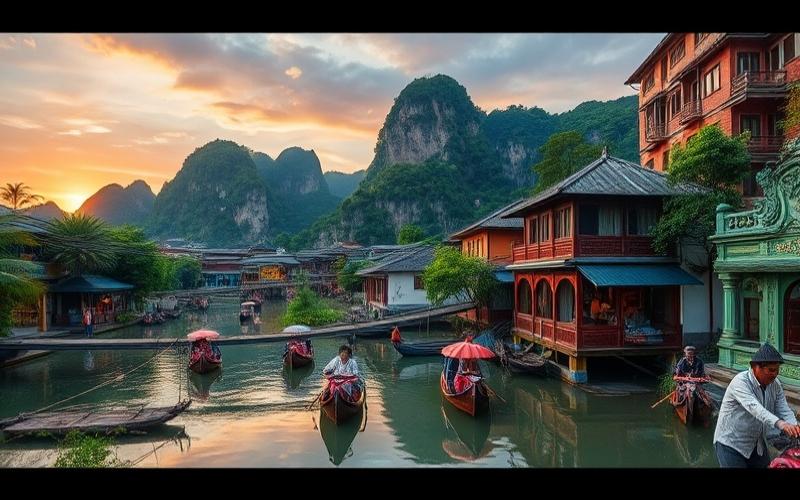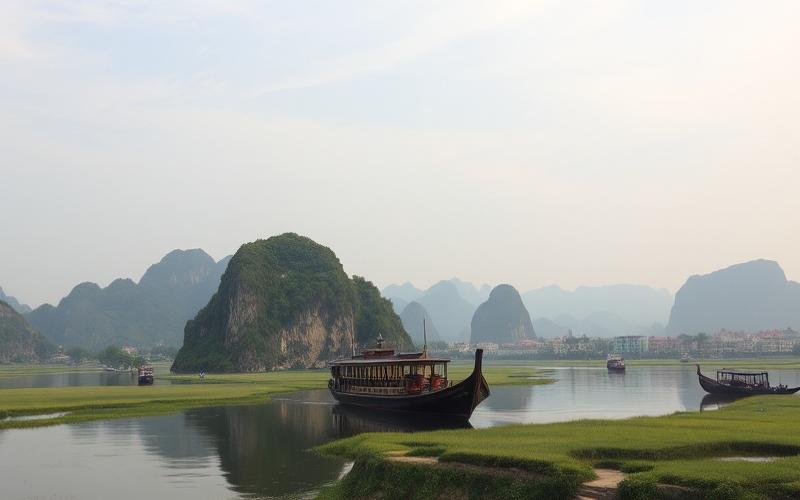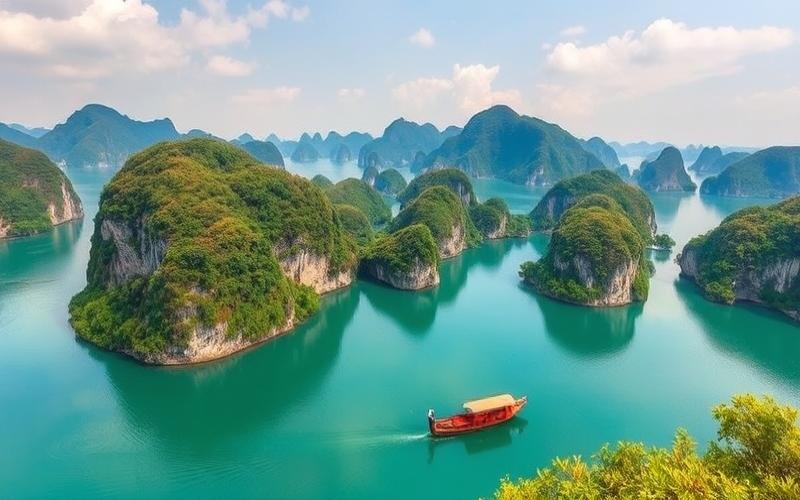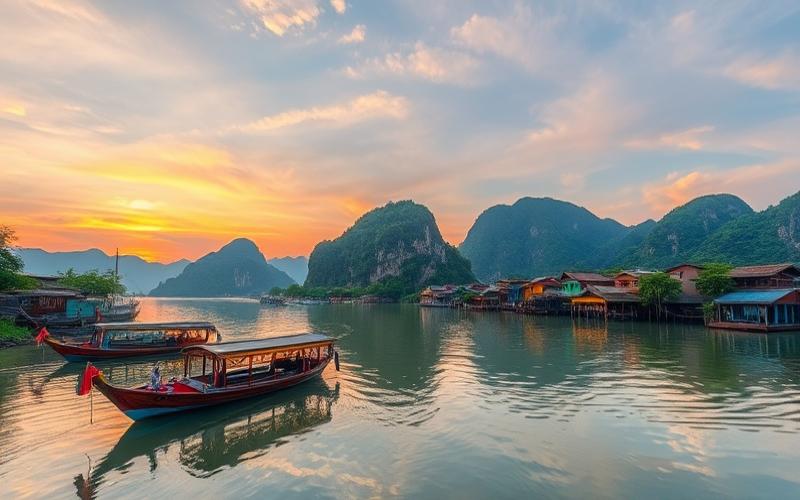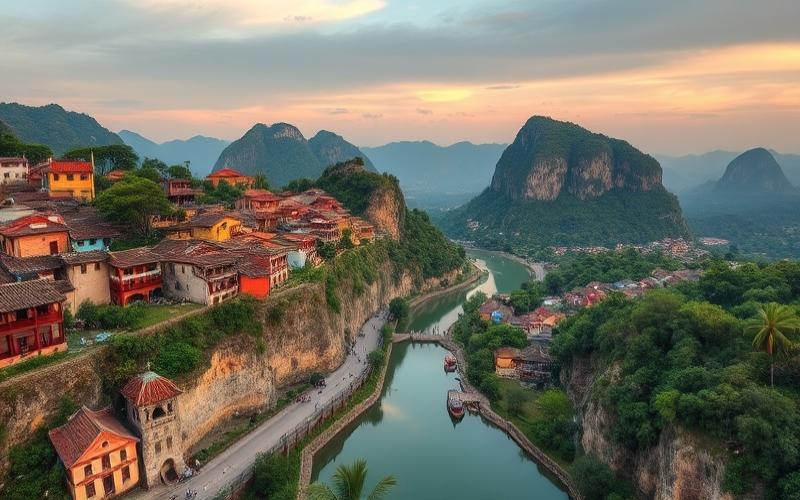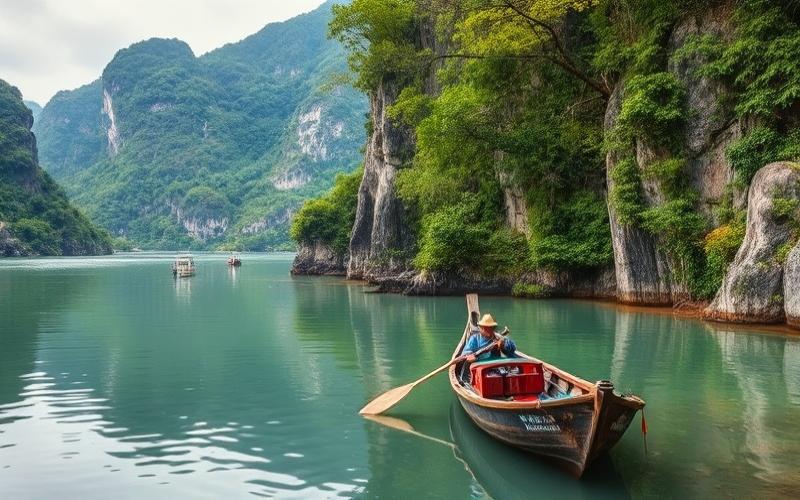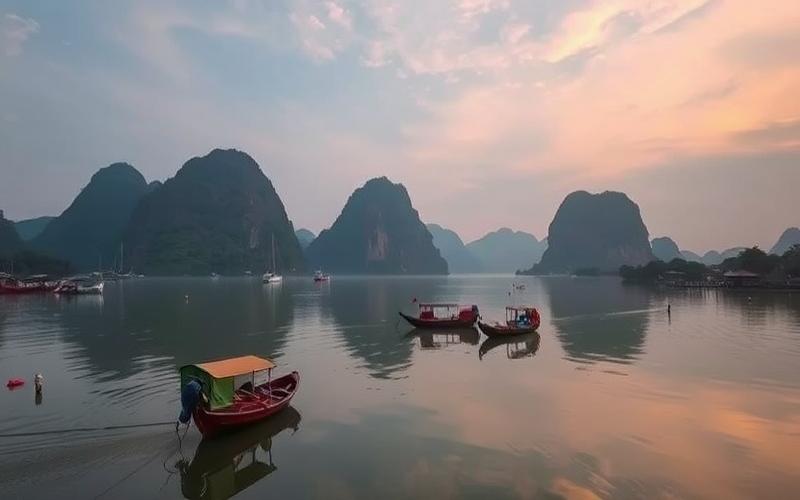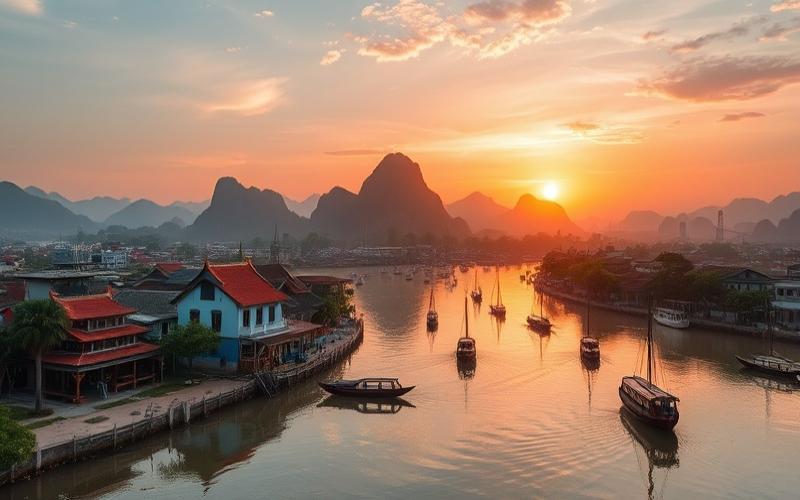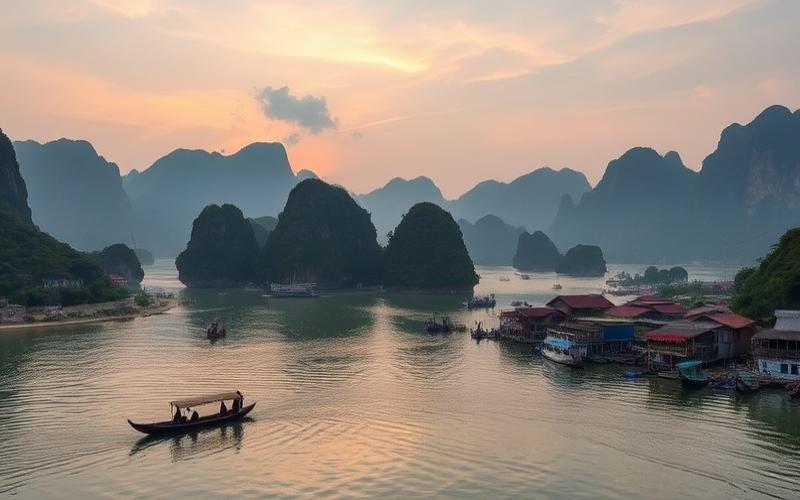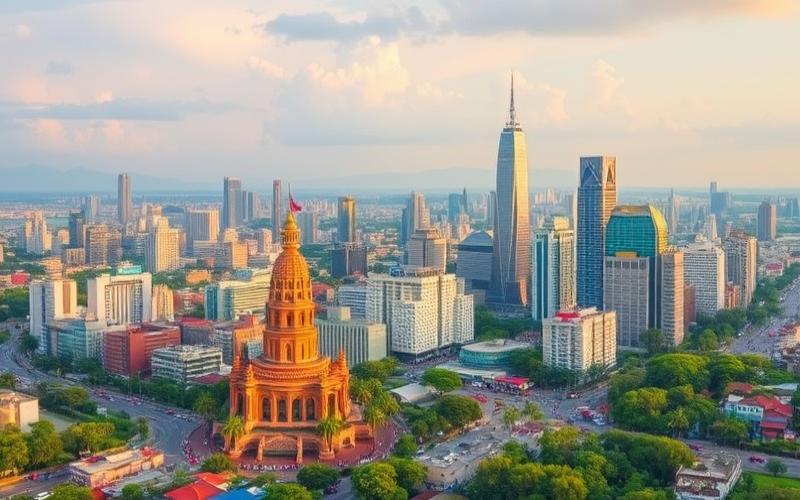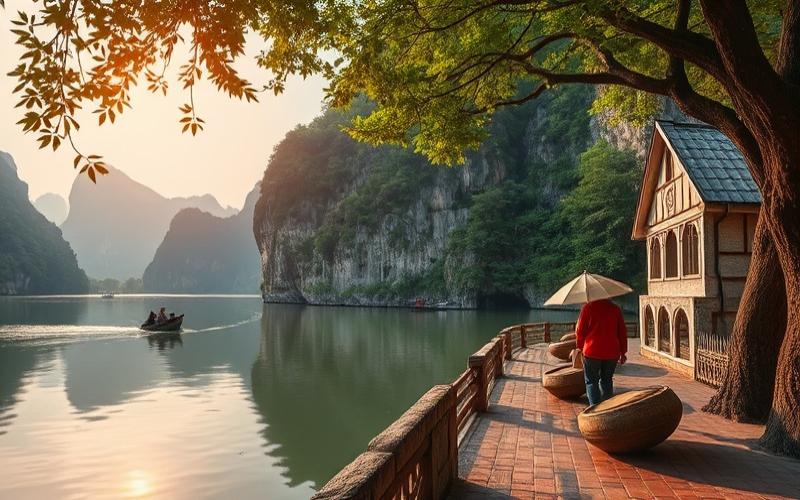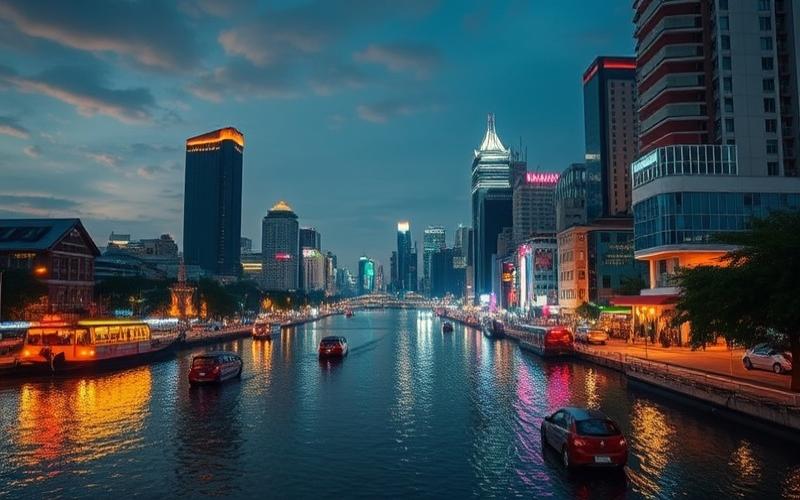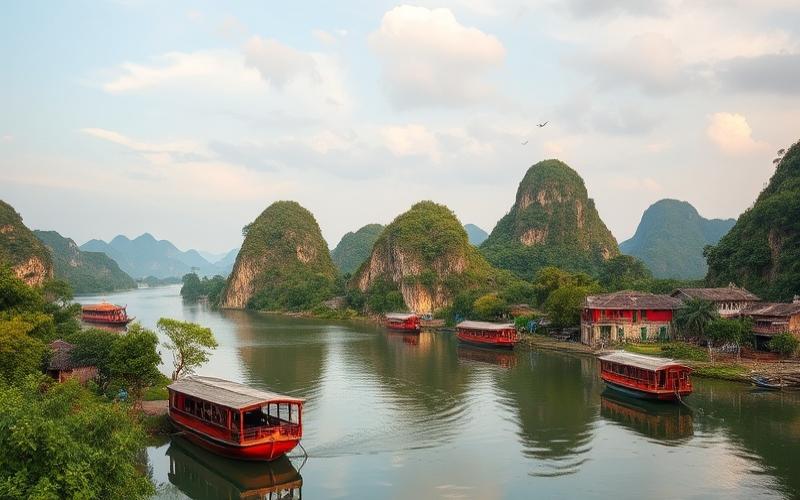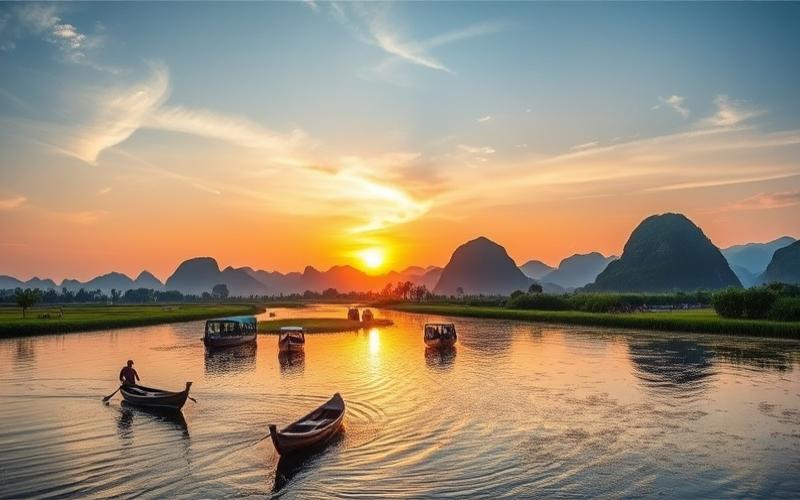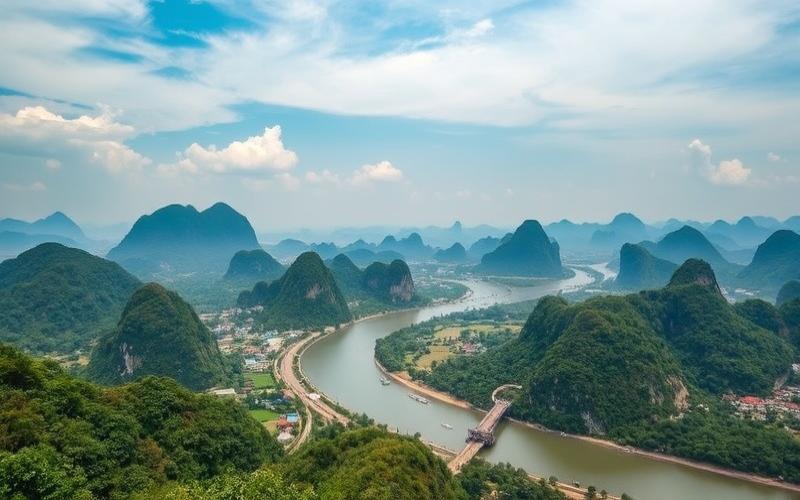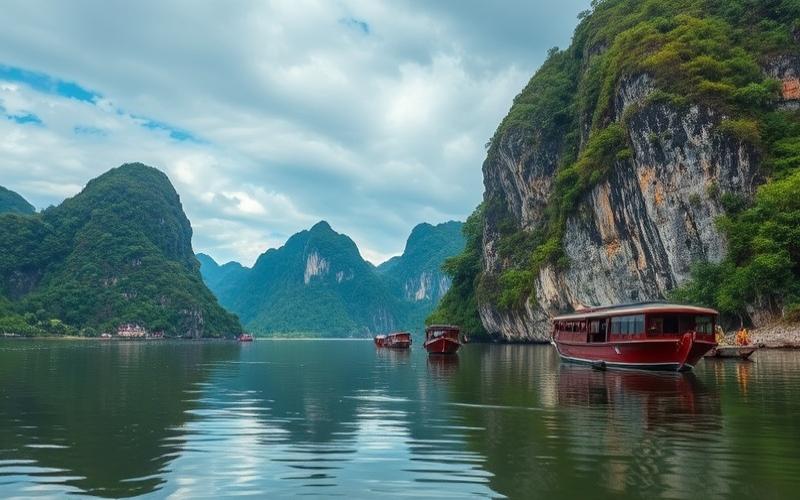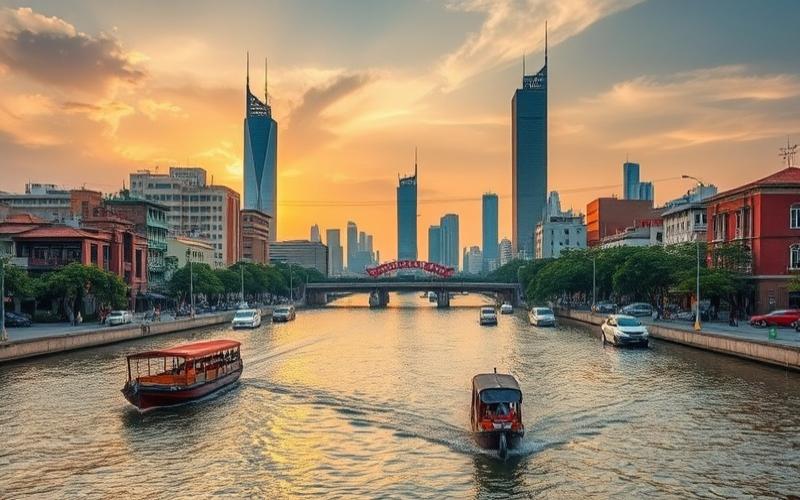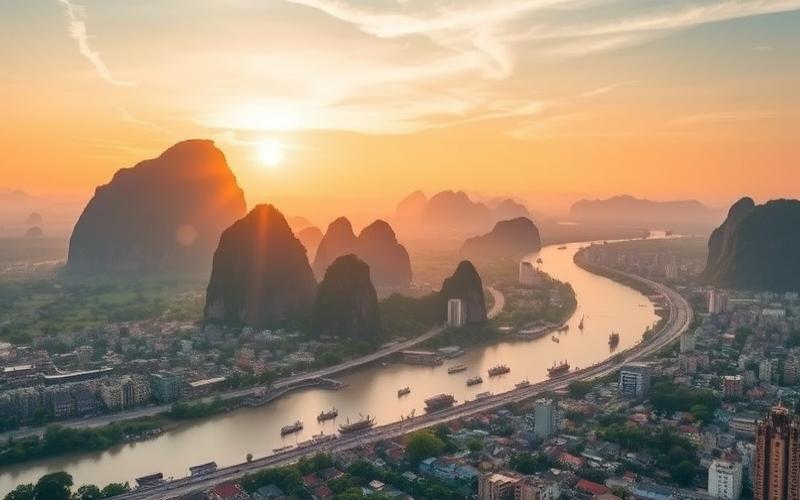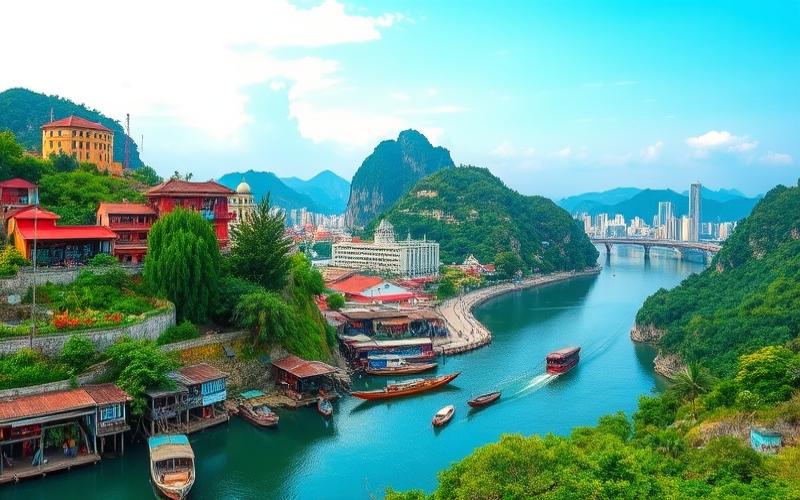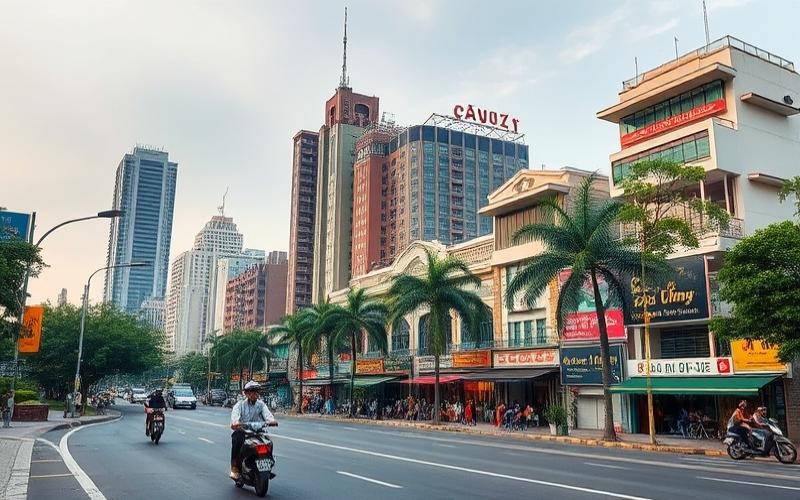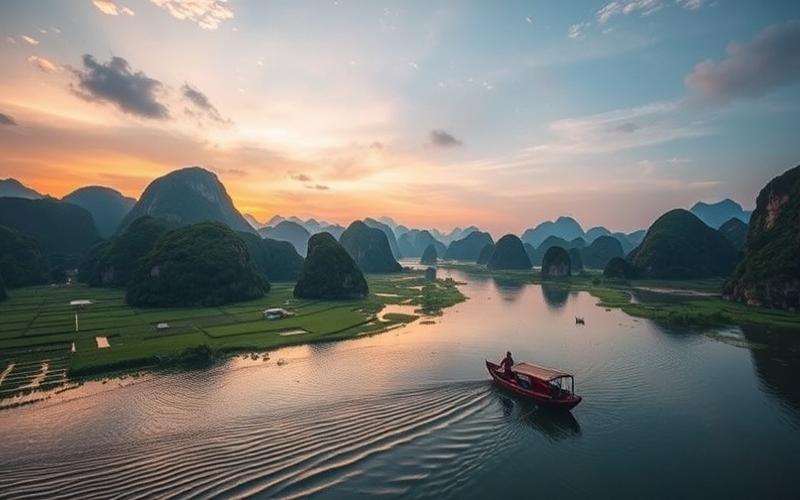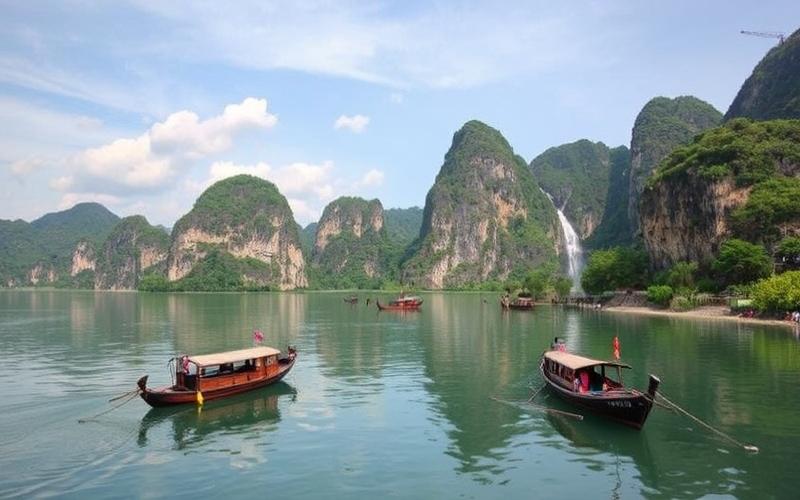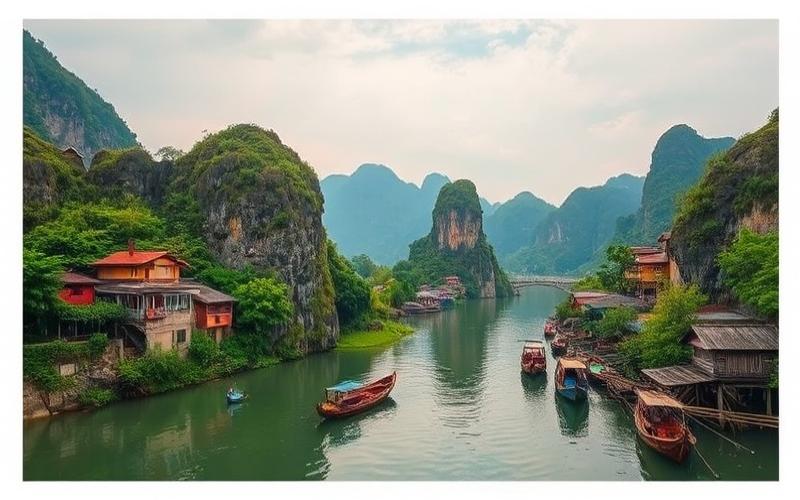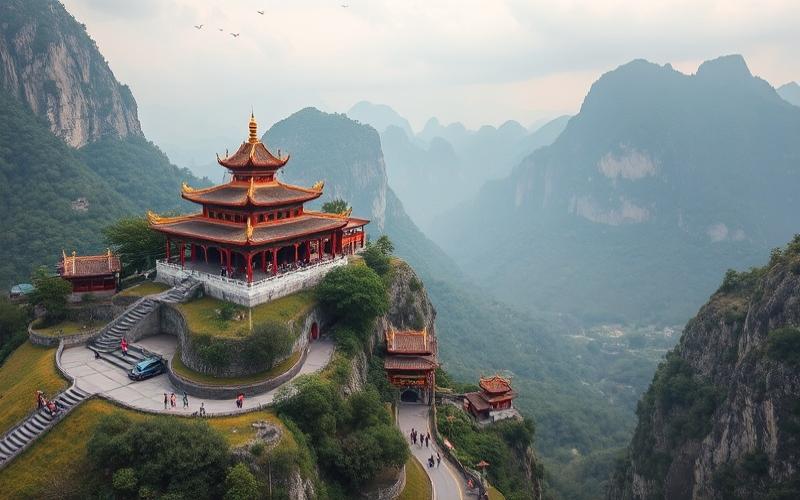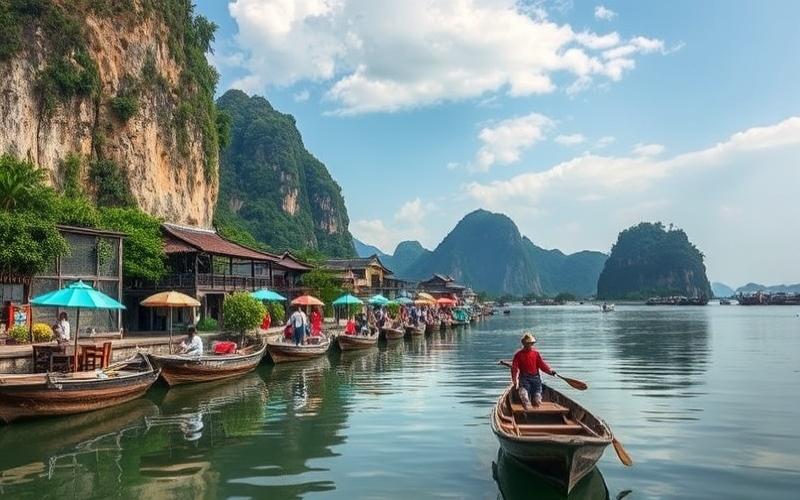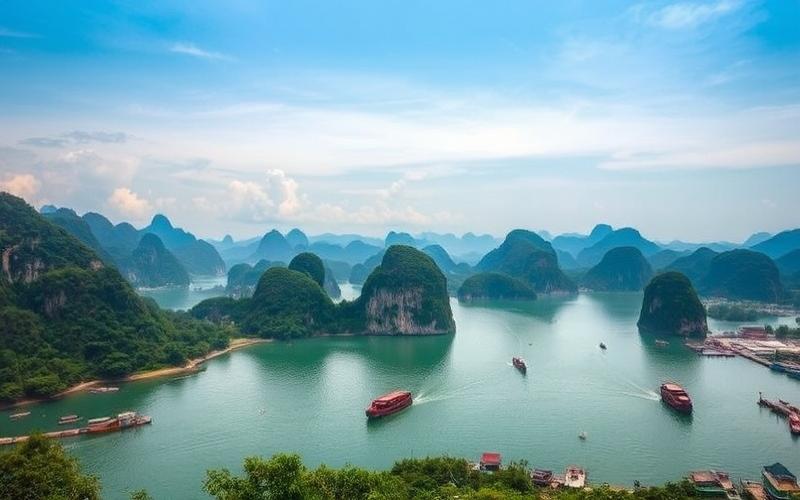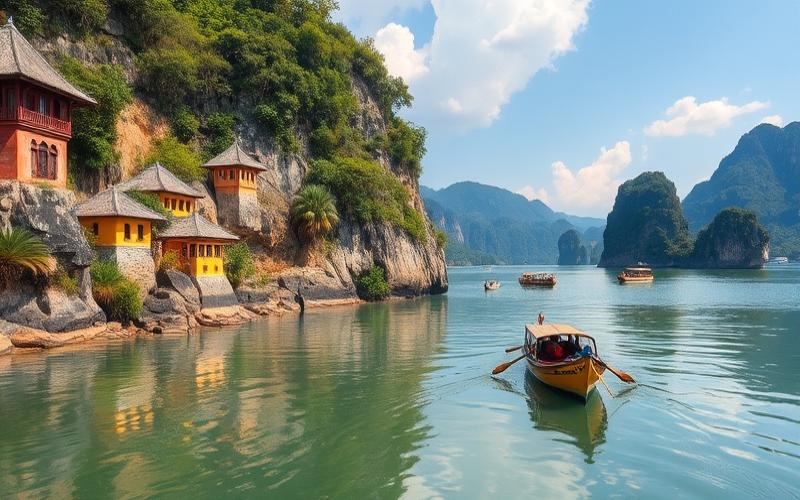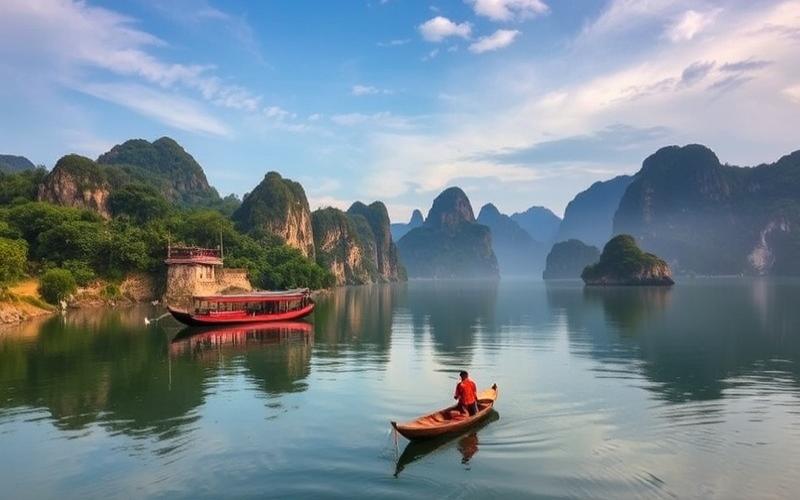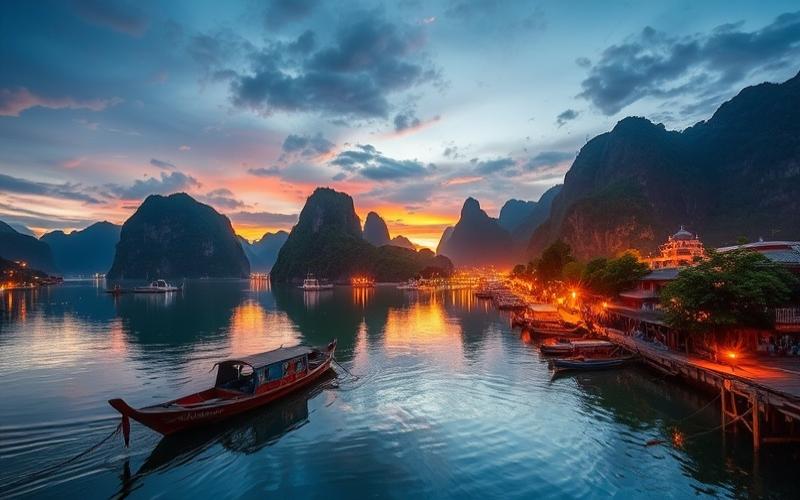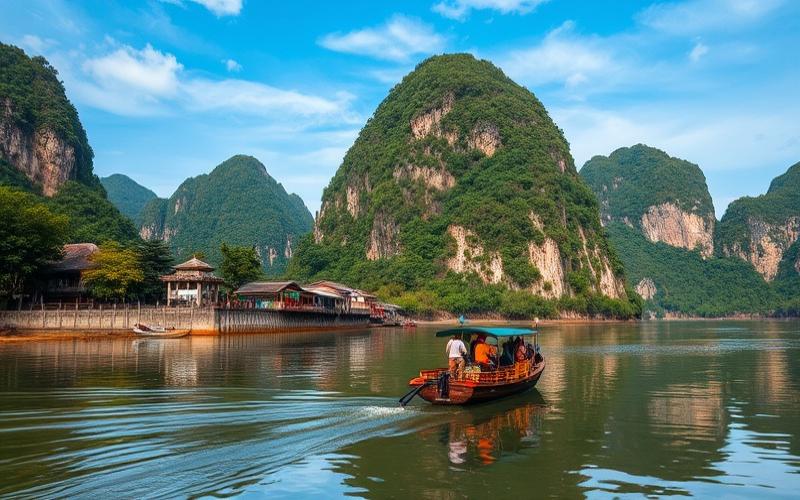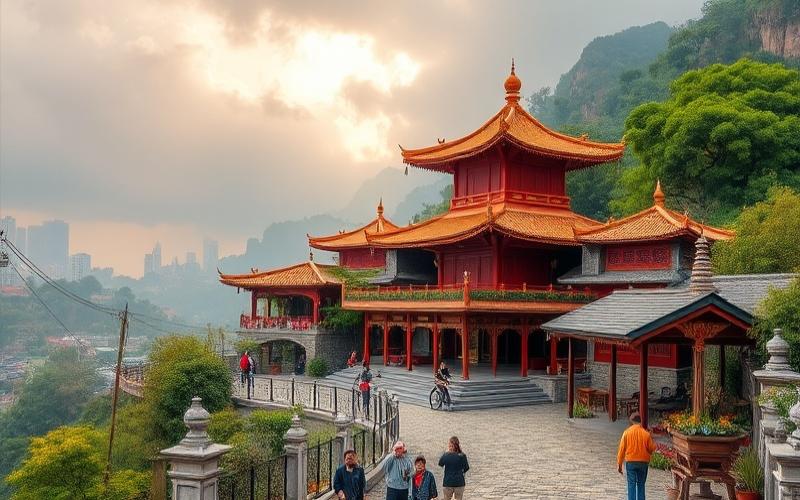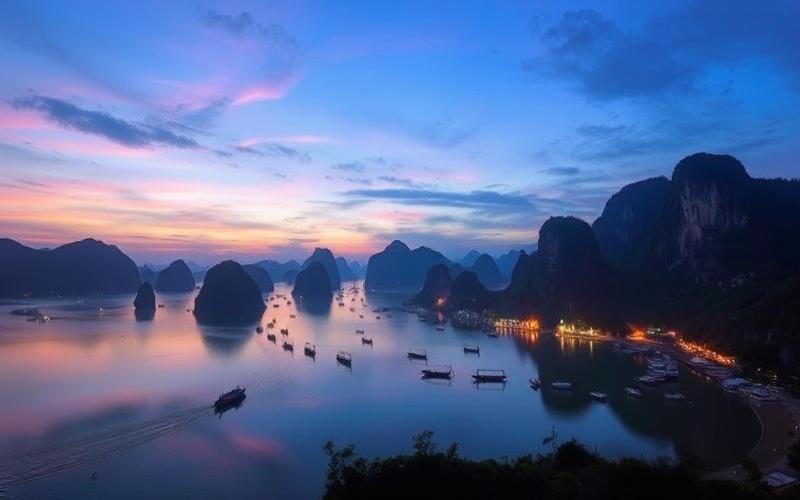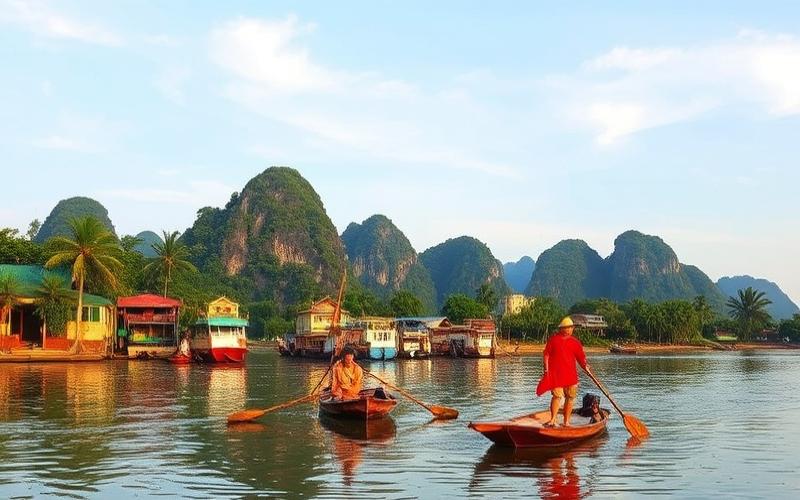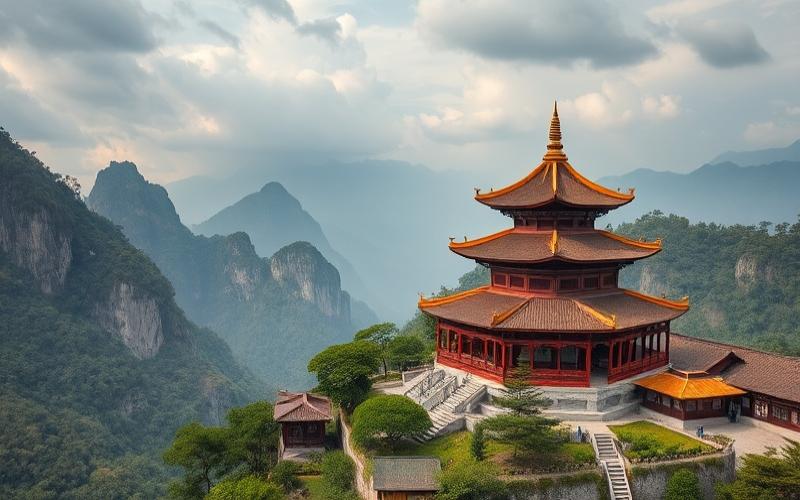
 Published on and written by Cyril Jarnias
Published on and written by Cyril Jarnias
Vietnam: A Rapidly Expanding Luxury Real Estate Market
Vietnam, once primarily perceived as an exotic tourist destination, is now undergoing significant transformation, attracting international investors’ attention to its rapidly expanding luxury property market.
With sustained economic growth and a rising middle class, the country’s urban landscapes are transforming with the emergence of high-end real estate projects, particularly in dynamic cities like Hanoi and Ho Chi Minh City.
Wealthy buyers are drawn to:
- Breathtaking views
- Modern infrastructure
- Impressive architecture of these new residences
These properties now rival those in major global capitals.
Good to Know:
The luxury property market in Vietnam has become a fascinating space where tradition and modernity converge.
It offers unique investment opportunities and a prestigious living experience for clients seeking exclusivity.
An Irresistible Appeal for Wealthy Investors
Key Factors Making Vietnam’s Luxury Property Market Attractive to Wealthy Investors:
- Sustained economic growth and rising disposable income, expanding accessibility to luxury goods.
- Rapid increase in affluent population and emergence of local and international investor classes.
- Enhanced appeal driven by growing demand for upscale lifestyle, secure residences, privacy, and exclusive services.
- Accelerated urbanization, particularly in Ho Chi Minh City and Hanoi, with major infrastructure projects (subways, roads, new districts).
- Development of branded residences associated with international hotel chains, meeting strict expectations of wealthy clients.
- Widespread integration of smart home technologies and environmental sustainability requirements (green buildings, low carbon emissions).
- Increased openness policy toward foreign investors, facilitating property acquisition for non-residents.
Favorable Economic and Demographic Trends:
- Market growth projected at an average annual rate of 13.65% by 2030, with expected value of $6.89 billion USD.
- Approximately 25,812 high-net-worth individuals (HNWI) and 50 ultra-high-net-worth individuals (UHNWI) expected in Vietnam by 2025.
- Declining interest rates and stimulus policies boosting real estate investment.
Tax and Legislative Advantages:
- Legislative reforms facilitating foreign access to property (limitations on certain holding periods, but increasingly stable and transparent legal environment).
- Favorable capital gains taxation for non-resident investors in certain cases.
- Measures promoting investment in premium tourism and residential sectors.
Infrastructure Quality and Location:
- Rapid improvement of urban infrastructure (transportation, road networks, premium services).
- Proximity of new luxury projects to business centers, international airports, and major tourist areas.
- Development of exclusive residential neighborhoods, often near subway stations, parks, and rivers.
Flagship Projects and Prime Locations Examples:
| Project / Neighborhood | City | Features |
|---|---|---|
| The Grand Manhattan | Ho Chi Minh City | Luxury residences in District 1 heart, panoramic views, high-end amenities |
| Vinhomes Golden River | Ho Chi Minh City | Riverside project, direct metro access, exclusive services |
| Sunshine City | Hanoi | Premium residential neighborhood, smart technologies, proximity to embassies and schools |
| Metropole Thu Thiem | Ho Chi Minh City | Next-generation urbanization in Thu Duc, integrated with future business district |
| Sun Grand City Ancora | Hanoi | Residences on Red River banks, quick access to historic center |
Features Sought by Wealthy Investors:
- Secure and private residences
- Hotel services (concierge, spa, fitness)
- Access to private clubs and recreational spaces
- Innovative architecture, premium materials, spectacular views
- Professional rental management for international investors
Visual Summary of Vietnamese Luxury Market Strengths:
- Robust economic growth
- Increasing legislative stability
- Modern and connected infrastructure
- Supply of iconic projects
- Strong local and foreign demand
- Competitive tax environment
Vietnam’s luxury property market thus attracts wealthy investors through a dynamic ecosystem, top-tier real estate offerings, and an increasingly favorable legislative framework for international investment.
Good to Know:
Vietnam’s luxury property market is increasingly attracting wealthy investors due to several key factors. First, the country’s rapid economic growth is driving demand for high-end real estate. Major cities like Ho Chi Minh City and Hanoi have become sought-after locations, with iconic projects such as The Marq and Four Seasons Private Residences embodying contemporary luxury. Investors are also drawn by the improving quality of infrastructure, including road networks and modernized urban services. Additionally, Vietnam offers tax advantages, such as relatively low transaction and ownership fees, and a legislative framework that facilitates foreign property acquisition. These elements, combined with the potential for real estate market appreciation, make Vietnam an attractive option for affluent buyers seeking lucrative long-term opportunities.
The Unique Characteristics of Luxury Properties in Vietnam
Architectural Features of Luxury Properties in Vietnam
Luxury properties in Vietnam stand out through the use of premium local materials, integration of Vietnamese culture and art in design, and significant emphasis on outdoor spaces.
| Architectural Element | Description | Examples or Desired Effects |
| Premium Local Materials | Use of noble wood, natural stone, treated bamboo, traditional tiles. | Natural ambiance, durability, landscape integration. |
| Vietnamese Motifs and Arts | Incorporation of traditional patterns, sculptures, bas-reliefs, artisanal works. | Heritage valorization, cultural identity, unique elegance. |
| Style Fusion | Blend of contemporary and traditional architectural elements (colonial inspiration, modernized Vietnamese motifs). | Harmony between modernity and tradition, refined aesthetics. |
| Outdoor Spaces | Lush gardens, patios, terraces, infinity pools, wellness areas (spa, fitness). | Connection with nature, well-being, reception and relaxation spaces. |
Prime Locations and Impact on Value
- City Center: Immediate proximity to urban amenities, panoramic city views, quick access to business and cultural districts.
- Waterfront: Direct ocean views, private beach, resort atmosphere, value enhanced by coastal land scarcity.
- Hillside: Spectacular panorama, privacy, temperate climate, nature immersion.
| Location | Advantages | Effect on Value |
| City Center | Urban life, premium services, security | High demand, prestige |
| Waterfront | Landscape, exclusivity, nautical activities | Scarcity, international appeal |
| Mountain | Tranquility, fresh air, privacy | Unique experience, sought-after isolation |
Integrated Technological Innovations
- Advanced smart home systems (centralized management of lighting, climate control, connected security, remote control).
- Eco-friendly devices (smart water management, solar panels, low-carbon footprint materials, environmental certifications).
- Customized services (digital concierge, modular spaces, wellness technology integration).
Balance Between Privacy, Luxury, and Accessibility
- Privacy: Private spaces (enclosed gardens, private pools, lounge areas), secure access, separation of living and reception areas.
- Luxury: High-end finishes, design customization, integrated artwork, wellness equipment.
- Accessibility: Proximity to urban amenities (shops, schools, healthcare) or natural features (beaches, trails, golf), easy circulation between indoor and outdoor spaces.
Key Takeaways
- Luxury properties in Vietnam successfully blend contemporary design with local architectural traditions.
- Heritage valorization, technological innovation, and priority given to nature integration are omnipresent.
- Location and ability to offer both privacy and access to amenities are central criteria for these properties’ appeal and value.
Luxury properties in Vietnam embody a lifestyle where refinement, innovation, cultural heritage, and harmony with the natural environment converge.
Good to Know:
Luxury properties in Vietnam stand out through their refined architecture, combining high-quality local materials like precious wood and natural stone with harmonious integration of Vietnamese culture and art in interior and exterior design. Outdoor spaces are carefully landscaped, offering lush gardens and infinity pools that enhance connection with the surrounding nature. These properties are often located in prime locations, whether in city centers, waterfront areas, or hillsides, increasing their appeal and value by providing stunning views and easy access to urban or natural amenities. Technologically, they incorporate innovations like advanced smart home systems and eco-friendly solutions for reduced environmental impact. This balanced blend of luxury and privacy, combined with practical accessibility, truly defines Vietnam’s luxury property market.
The Most Sought-After Neighborhoods for High-End Investment
The luxury residential real estate market in Vietnam is experiencing sustained growth, driven by the country’s economic boom, rapid increase in wealthy individuals, and growing influx of foreign investors. In 2024, this sector is estimated at $3.64 billion USD and expected to reach $6.89 billion USD by 2029 with an average annual growth rate (CAGR) between 4.41% and 13.65%, according to analysts’ methodologies. Major metropolitan areas show growing demand for high-end residences integrating connected technologies and environmental criteria.
Key Factors Driving Market Momentum:
- Rapid growth in high-net-worth individuals (HNWI)
- Accelerated urbanization in major centers
- Increased expectations for private security, personalized services, and international standards
- Development of major infrastructure such as subway systems or expressways
| Indicator | Estimated Value/Trend |
|---|---|
| Market Size in 2024 | $3.64 billion USD |
| Projected Size in 2029 | $6.89 billion USD |
| CAGR (Forecasts) | Between 4.41% and 13.65% |
| HNWI Population in Vietnam (2025) | Approximately 25,800 people |
Iconic Neighborhoods or Regions for High-End Investment:
- Ho Chi Minh City
- Central Districts (Districts 1 & 3): headquarters of international embassies and five-star hotels.
- District 2 – Thao Dien & An Phu: neighborhood highly favored by expatriates with prestigious international schools.
- Thu Duc City: new urban area oriented toward high technology; high concentration of new projects near Metro Line 1 stations.
- District 7 – Phu My Hung: planned urban model renowned for environmental quality.
- Hanoi
- Tay Ho (West Lake): panoramic lake views; proximity to international restaurants.
- Ciputra International City & neighborhoods around Hoan Kiem Lake.
- Da Nang / Nha Trang / Ba Ria-Vung Tau
- Coastal neighborhoods offering ultra-luxury beach villas backed by international resorts.
Specific Features Sought by High-End Investors:
- Branded or internationally hotel-managed residences
- Enhanced security with private access control
- Landscaped green spaces & exceptional unobstructed views
- Advanced smart home integration
- Direct access to premium shopping centers/spas/michelin-starred restaurants
Iconic Examples:
| Project/Property | Location | Features |
|---|---|---|
| The Metropole Thu Thiem | District 2 HCMC | Saigon River views; contemporary design |
| Sunwah Pearl | Binh Thanh District HCMC | Premium mixed-use residence facing river |
| Vinhomes Golden River | HCMC City Center | Residential ecosystem connected to metro |
| D’. Le Roi Soleil | Tay Ho Hanoi | Lake-view apartments signed by Tân Hoàng Minh |
Prices in these sectors have appreciated significantly in recent years: some central residences now exceed $8,000–10,000 USD/m², while peripheral but well-served neighborhoods show more moderate but continuous growth thanks to new urban developments.
Long-Term Opportunities:
- Expected increase in expatriate numbers favoring long-term leasing in the premium segment.
- Continued openness to foreign investment facilitating secondary market liquidity.
- Recent or upcoming commissioning of heavy infrastructure like metro lines further increasing attractiveness.
To invest in these sought-after neighborhoods in Vietnam, emphasis should be placed on both strategic location and intrinsic quality of promising projects, with vigilance regarding regulatory developments related to foreign purchase to optimize rental yield and future asset appreciation.
Good to Know:
Vietnam’s luxury real estate market is experiencing dynamic growth, with strong demand in sought-after neighborhoods such as Thao Dien in Ho Chi Minh City and Tay Ho in Hanoi. These areas stand out for their modern infrastructure, easy accessibility, and strong cultural appeal, thus attracting high-end investors. Thao Dien, for example, offers luxury residences with amenities such as renowned international schools and prestigious shopping centers, while Tay Ho is appreciated for its picturesque lake views and cultural offerings. According to recent data, prices in these neighborhoods have seen a 10 to 15% increase over the past two years, reinforcing their status as safe long-term investment values. Ambitious development projects, like Vinhomes Central Park in Ho Chi Minh City, continue to attract significant capital, highlighting the growth potential and opportunities available in these sectors.
New Trends Shaping Vietnam’s Luxury Property Market
Current Preferences of Wealthy Buyers:
- Strong demand for properties offering panoramic views, often of rivers, cityscapes, or oceans.
- Marked taste for contemporary designs, combining elegance and functionality.
- Expectation of high-end amenities: infinity pools, private wellness centers, advanced smart home systems, enhanced security.
- Value placed on central or prestigious locations in major metropolitan areas.
Emerging Architectural Trends:
- Growing use of sustainable materials (certified wood, low-emission glass, low-carbon concrete).
- Systematic integration of smart technologies:
- Automated energy management
- Centralized comfort control (temperature, lighting)
- Remote monitoring and management via mobile applications
| Architectural Trend | Main Description |
|---|---|
| Sustainable Materials | Reduced carbon footprint |
| Smart Technologies | Comfort optimization and energy savings |
Impact of Remote Work on Preferences:
- Increased search for versatile spaces allowing discreet but effective integration of home offices.
- Development of open, modular plans or with dedicated work rooms.
Example: Apartments with enclosed office alcoves separated by acoustic glass partitions.
Personalized Experiences and Custom Services:
- Buyers now prioritize residences that can be highly customized:
- Choice of interior materials
- Ergonomic adaptations according to lifestyle
- Custom creation of spaces (private media rooms, wine cellars)
Expected services: private concierge, personalized maintenance, event organization.
Growing Influence of Foreign Investors:
- Massive entry of international investors contributes to diversifying offerings:
- Increased appearance of “branded” residences in partnership with international hospitality
- International standards in design and rental management
- Increase in properties adapted to Western/Asian premium tastes
| Foreign Influence | Main Effects |
|---|---|
| Asian Investors | Contemporary Asian aesthetics |
| Western Investors | Technological standards & personalized services |
Real Estate Developers’ & Designers’ Adaptation to Evolutions:
- General upscaling to meet high demands (material quality/finishes).
- Close collaboration with architects specialized in sustainable development and international designers to anticipate future demand.
- Flexible offerings integrating customization from conception.
The Vietnamese market is thus structured around the triad of “modernity – personalization – sustainability,” driven jointly by rising local expectations and international dynamism.
Good to Know:
In Vietnam’s luxury property market, a marked trend is emerging with wealthy buyers showing growing preference for properties offering stunning views and contemporary designs, including advanced technological amenities. Architects are increasingly integrating sustainable materials and smart solutions to enhance comfort and energy efficiency, while the popularity of remote work is pushing buyers to seek multifunctional spaces with home offices. Additionally, the appeal for personalized experiences is reflected through custom services and highly adaptable layouts. The influx of foreign investors also contributes to diversifying offerings, influencing developers and designers who strive to adapt their projects to new market expectations to remain competitive.
Disclaimer: The information provided on this website is for informational purposes only and does not constitute financial, legal, or professional advice. We encourage you to consult qualified experts before making any investment, real estate, or expatriation decisions. Although we strive to maintain up-to-date and accurate information, we do not guarantee the completeness, accuracy, or timeliness of the proposed content. As investment and expatriation involve risks, we disclaim any liability for potential losses or damages arising from the use of this site. Your use of this site confirms your acceptance of these terms and your understanding of the associated risks.

